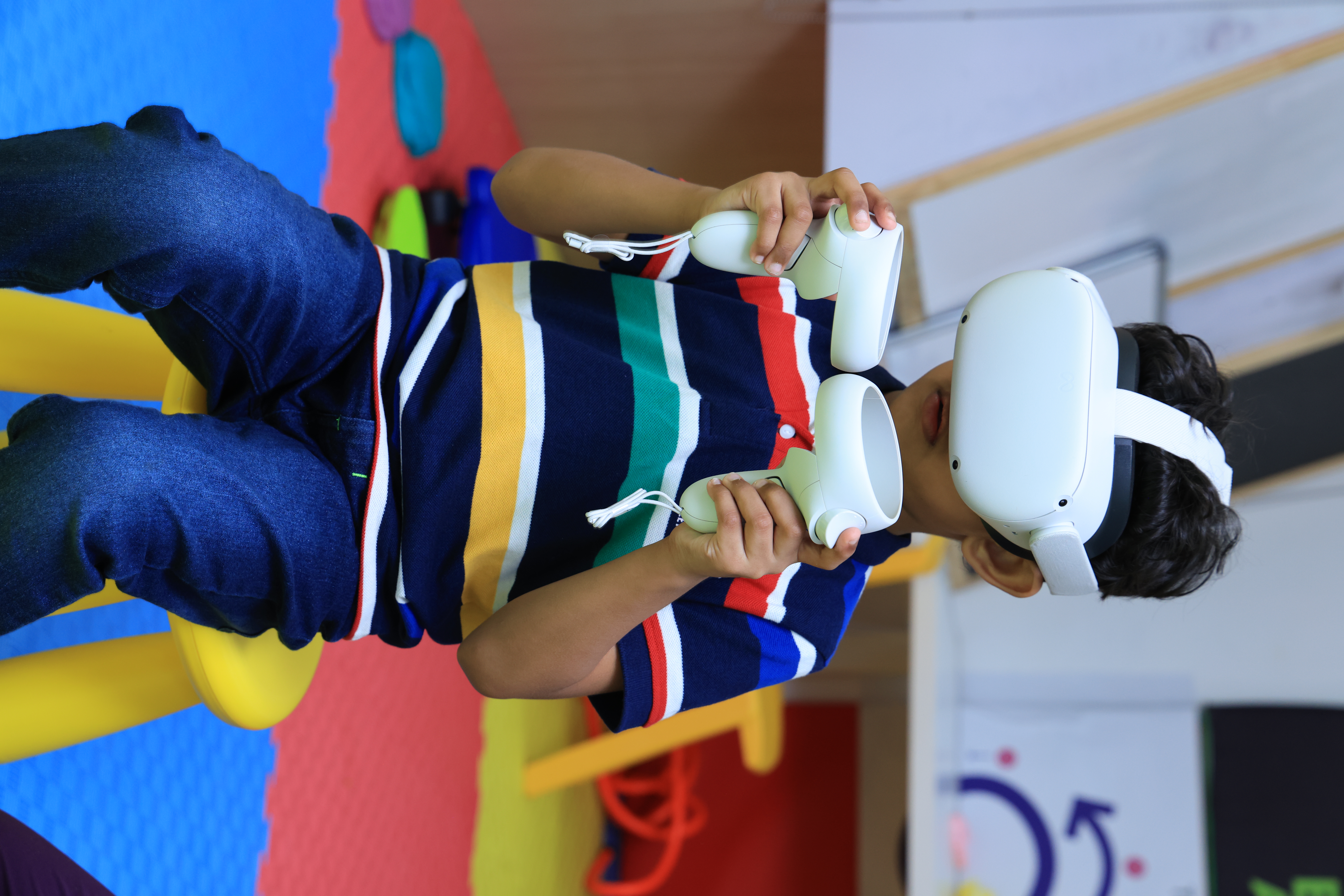Virtual Reality
Virtual Reality
Virtual reality (VR) refers to a computer-generated simulation or environment that replicates real-world or imagined settings, allowing users to interact with and experience them in an immersive way. VR typically uses specialized equipment like headsets, gloves, or motion controllers to create a sense of presence and enable interaction with the virtual environment.

By creating controlled, interactive environments, VR helps children practice skills like social interaction, motor coordination, and sensory integration. The use of VR in therapy promotes neuroplasticity, motivating children to complete tasks while improving both cognitive and physical development. This innovative approach provides a safe and effective way to enhance children‘s therapeutic experiences.
Benefits of Virtual Reality:
- Immersive Learning: VR engages multiple senses, enhancing learning and memory retention by providing an interactive and immersive experience.
- Safe Exploration: It allows for the simulation of dangerous or inaccessible environments, such as hazardous workspaces or historical settings, without the risks associated with physical exploration.
- Increased Engagement: VR tends to captivate users, improving focus and engagement, which is particularly useful in education and training settings.
- Enhanced Empathy: VR can simulate the perspectives of others, such as in experiences that simulate disabilities or different cultural contexts. This can promote empathy and understanding.